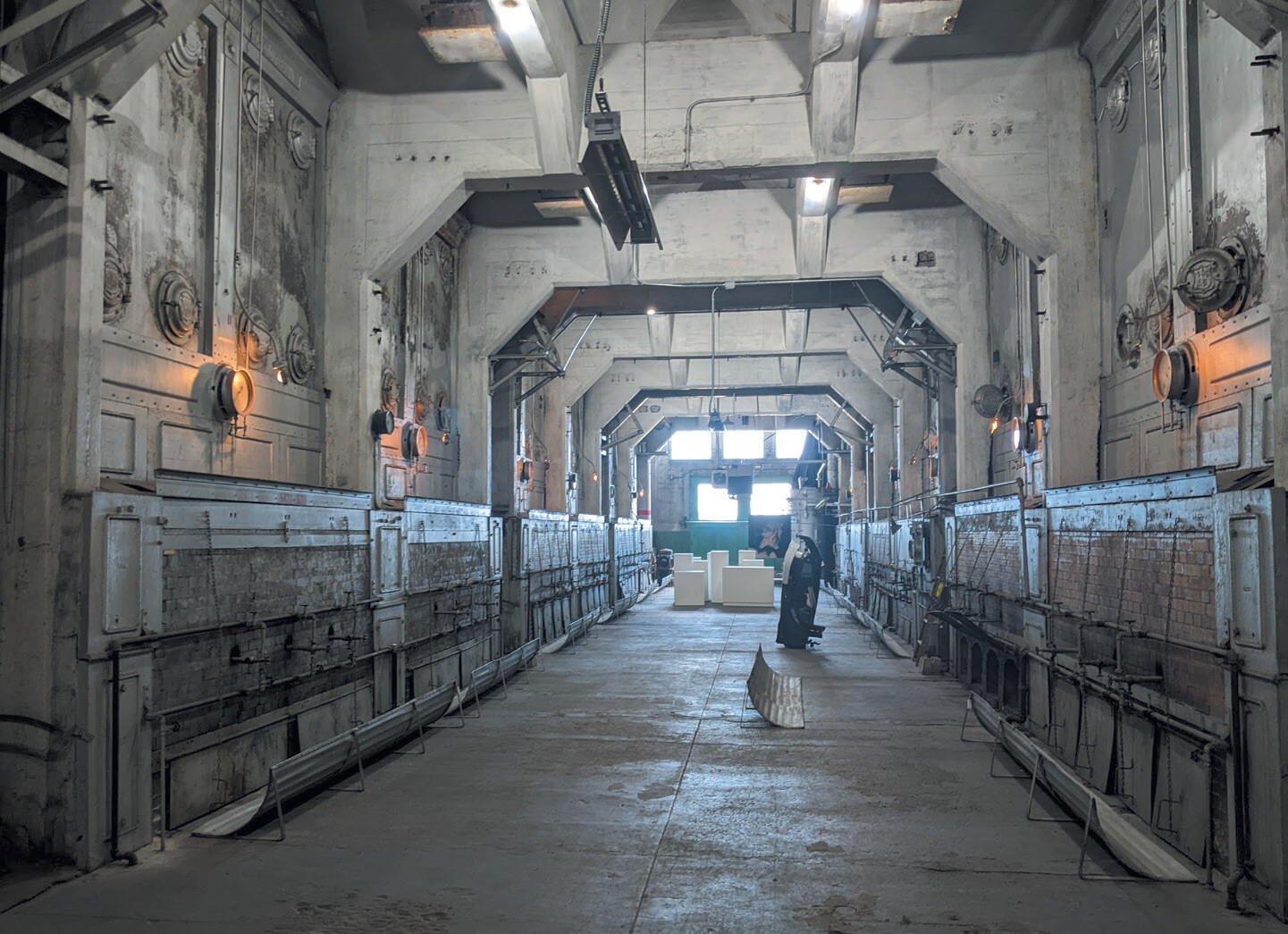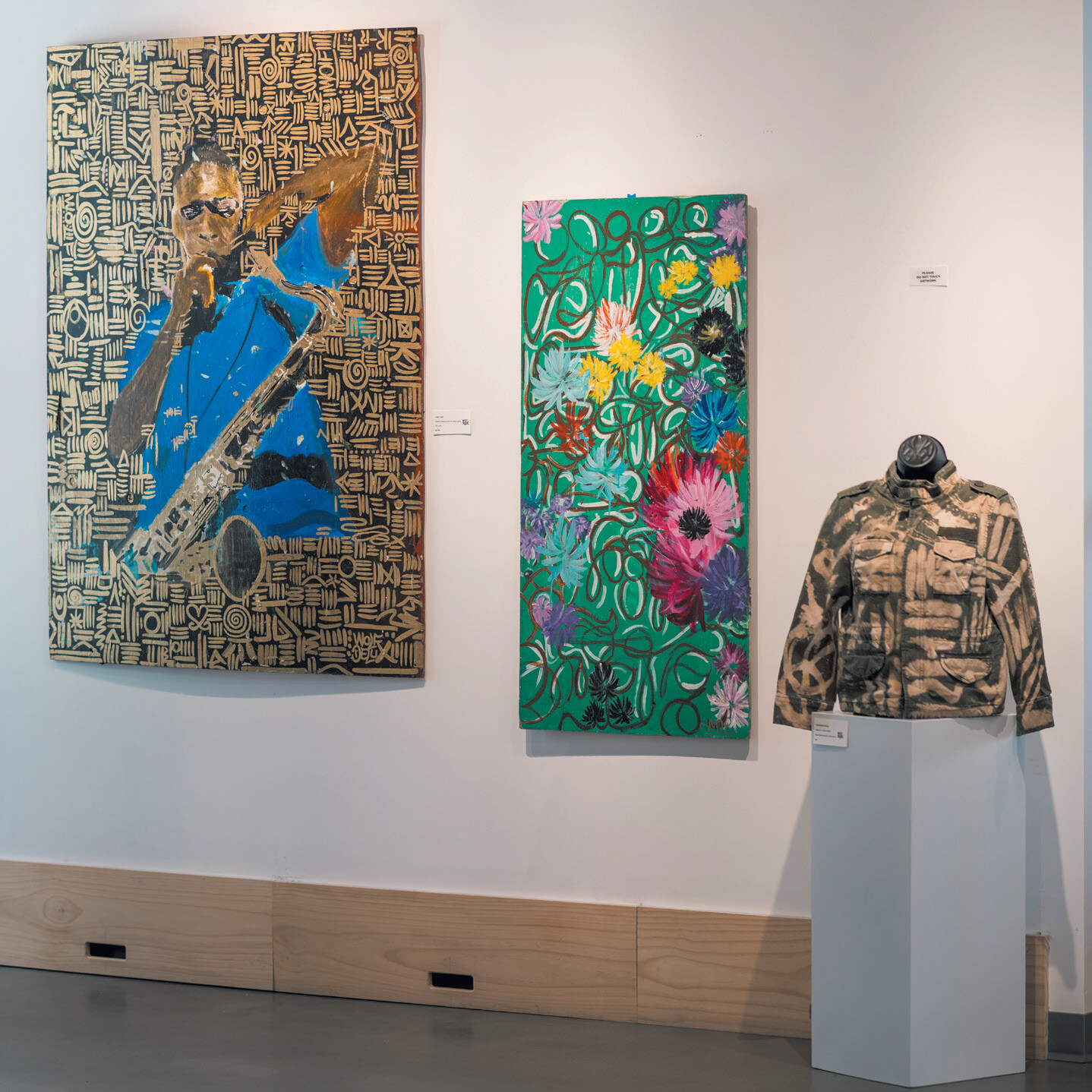South Seattle Arts Resist Displacement
The last stop for artists before leaving the city, South End art & culture spaces show what it takes to preserve community
South Seattle Arts Resist Displacement
The last stop for artists before leaving the city, South End art & culture spaces show what it takes to preserve community

“Have you ever been in here before?” asked Sam Farrazaino, leading me into the Georgetown Steam Plant, a decommissioned hydroelectric plant built in 1906 and closed in 1977. Ushered inside, I found myself looking up at two massive Curtis Vertical Steam Turbines, sleeping giants of a bygone age.
I felt honored to get a tour of this historic Steam Plant led by its number one fan. Farrazaino, a self-described lover of industrial detritus, said, “It’s my favorite building in all the world.”
Farrazaino founded Equinox Studios in Georgetown, known for acquiring industrial spaces and transforming them into affordable studios for artists and makers. Equinox uses its collective equity as leverage to purchase yet more spaces. “We created different ways to navigate the system and built equity,” Farrazaino explained. “That gave us the leverage to take it to the next level.”
Equinox now houses about 200 artists throughout its Creative Industrial Complex, and Farrazaino hopes to increase that to 2,000 in a few years. The Steam Plant fits this vision of repurposing industrial spaces to serve artists, albeit as an eccentric and impressive relative in the Equinox family.
Farrazaino led me through the Steam Plant’s circuitous pathways and steep flights of stairs, explaining giant switchboards, cranes, coal chutes, the boiler room, and the ash room. While work still has to be done to make it accessible, the “industrial cathedral” already attracts bands and performance artists, film screenings, and an upcoming science fair September 21-22. Most artists attracted to the space incorporate the site into their work; the Steam Plant is a co-collaborator in its own right.
Working with other partners, Farrazaino secured a 60-year lease with the City to open the Steam Plant to the public. He sees it as a medium of reconciliation: a site of acknowledging the forced displacement of Duwamish people, the environmental damage caused by the plant’s extraction model, the hubris and harm of industrialists, and fi nally, an exciting turning point for what it can become in service to art and communities.
It’s just one example of how arts groups in Central and South Seattle, as well as South King County, are working together using unique connections to the land to help resist the displacement of artists and marginalized communities.
In the Central District, it’s organizations like Arte Noir and Wa Na Wari; SEEDArts in the Columbia Hillman City Arts District; and yəhaẃ in Rainier Beach doing the work.
”If you think about it, Southeast Seattle is the last stop,” said Kathy Fowells, SEEDArts Director. “If artists get pushed out of Southeast Seattle, if they move further south, they're out of the city limits, and Seattle loses them forever. People don’t move back to a more expensive thing.”
“Seattle doesn't see it happening,” said Farraziano. “They're like, 'Oh, no, we're still really great.’ Well, we can make Tacoma the art mecca of Washington, or we can start recognizing that resource, protect it here and empower it.”
In the Central District—an area that was at one time 80% Black, and now is less than 10%—real estate is at a premium, if you can fi nd any at all. But in recent years, several Black-focused arts and cultural spaces have formed, like Wa Na Wari, Made Space Seattle, bookstore and salon Loving Room, and Arte Noir.
Started in 2021 as an online publication, Arte Noir secured a permanent gallery and retail space in Midtown Square in 2022. Vivian Phillips, founder and board president of Arte Noir, explained that it was partly a sense of displacement that inspired the gallery.
“For a very long time, I didn't feel like this was my community anymore, and it was painful. But I think that's turned around,” Phillips said. “[Now] we have a beautiful space created by, for, and about Black artists and representative of Black culture.

“One of the things I had seen happening to Black business owners is that they did not have control over their destiny,” said Phillips. “We are owners of our space now. We own our footprint.”
Arte Noir is compiling its Black Artist Roster, a directory of Black artists in Washington state. They have plans to offer even more resources for local creative communities: a recording studio and maker space.
In the case of Wa Na Wari, a “container for Black joy”, arts and anti-displacement go hand-in-hand. The organization rents a fifth-generation-owned Black home in the Central District and opens it up as a space for Black art, organizing, and community building. Wa Na Wari is helping empower other Black homeowners with creative strategies to keep homes in their families through an initiative called the Central Area Cultural EcoSystem, 21st Century (CACE21).
CACE21 hosts Black homeowner dinners, info sessions on policy, and more. They hold discussions on converting parts, or all, of homes into micro-cultural spaces, opening up Black-owned homes to Black artists and events, just like Wa Na Wari—working with existing homeowners to resist and reverse displacement. Wa Na Wari’s annual Black arts festival and fundraiser, Walk the Block, takes place this year on September 27. The first expansion of Walk the Block, the Walk the Block Institute, happens on September 28, with a series of workshops hosted by CACE21.
Five miles south of Wa Na Wari is the Columbia Hillman Arts & Cultural District. This thriving Southeast Seattle arts community includes Columbia City Theatre, Black and Tan Hall, The Royal Room, and more.
SEEDArts, a Southeast Seattle arts organization, oversees the Columbia City Gallery, Rainier Arts Center, a public and community arts program, and affordable artist studios in Hillman City. “The 98118 ZIP code has among the highest densities of artists in the state,” said Fowells. “And at the same time, we have fewer facilities than other neighborhoods that have fewer artists and creatives than we do.”
“I think a lot of what drove there to be so many artists and creatives in the South End was traditionally we had cheaper rent,” Fowells said. But as the light rail and more development came to Columbia and Hillman City, housing costs skyrocketed. “I feel a real sense of urgency for claiming arts and cultural space now.”
Getting aligned organizations to go in on a property together can help in a neighborhood with limited and expensive real estate. For example, a recent building acquisition included SEEDArts working with Black & Tan Hall and a multicultural coalition called Hillman City Partners.
Working with other organizations requires more time and intention.”If any one of those partners were to go under or move out of the neighborhood, it creates longer-term sustainability,” Fowells said. “And I think collectively owned real estate just ensures it remains in the best interest of the community.”
When yəhaẃ Indigenous Creative Collective (pronounced “ya-howt”) acquired 1.5 acres of land in Rainier Beach and a neighboring house the following year, it became “a permanent and collectively held asset for Indigenous peoples, stewarded for the benefit of all people,” said yəhaẃ executive director Asia Tail.
Formed in 2017 with over 200 Indigenous artists, yəhaẃ quickly realized the opportunities for more Native-led art and curatorial projects. In 2019 yəhaẃ had an exhibition at ARTS at King Street Station that brought together over 100 tribal affiliations from around the world. In addition to workshops, pop-up markets, and partner events, being in community with other Native artists was transformative.
“We really wanted to find our own space where we could experience creative sovereignty and work outside of a regular white-wall gallery and be outdoors,” Tail said. The collective started looking for land and eventually got a grant from the city, enabling them to close on the site in 2022.
During much of their first year there, the collective and partner organizations cleared and tended to the land, which had historically been a garden.
“We couldn't actually access the whole back part of the site for maybe six months,” Tail explained. “There were these fallen trees, and so every couple months, the land would let us get a couple yards further, or some new thing would be discovered underneath the ivy, literally buried for years. There's been this sort of nice relationship building where there's always a sense of wonder.” yəhaẃ has weekly volunteer opportunities to help clear and maintain the land, as well as art workshops, Indigenous beading circles, and creative residencies. “We’re able to offer this art space that’s outside and land-centered and complements all the beautiful indoor spaces and the housing reclamation work that Wa Na Wari is doing,” said Tail. “We’re offering another example of a space where art can be beneficial for [anti-]displacement work.”
If South Seattle is a last stop for artists before they get pushed out of city limits, a new wave of arts spaces is blooming in South King County. Burien achieved its Creative District designation from the state in 2022; Renton’s Black River Cultural Arts Center offers gallery space, Indigenous arts markets, and events; and SeaTac’s new venue, The Roadhouse, provides performing arts and musical events at Angle Lake Station. The African Community Housing and Development also has plans for a Cultural Anchor Village in SeaTac, representing the African diaspora community.
Whether finding unique ways to resist displacement in Seattle or expanding to South King County, local artist communities have always been creative problem solvers.
“We're never going to turn the clock back, go back to the way things once were,” said Phillips.”Having worked in the arts and arts management for so many years, I have embraced the concept that if I can't stop certain things from happening, I can participate in shaping how they come out.”